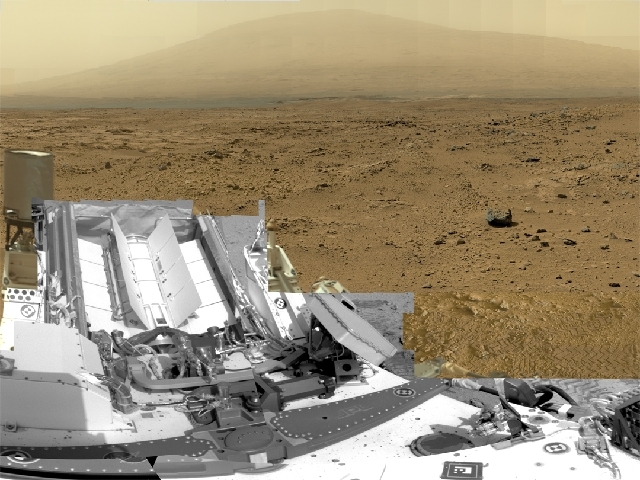Panel: Next Mars rover should gather rocks, soil
LOS ANGELES — Explore an intriguing spot on Mars. Hunt for ancient signs of Martian life. Bag a bunch of rocks and leave them on the surface for a future mission to possibly return.
That’s what the next rover to Mars should strive for, a NASA-appointed team said Tuesday.
The scientists released a 154-page report outlining ambitious science goals for a red planet mission that NASA wants to launch in 2020.
While the plan marked the first concrete step toward returning a piece of Mars to Earth, NASA said it’s unclear how — or when — the cache would be retrieved.
“We’re not signing up to a timetable or a commitment for a follow-on mission,” said NASA sciences chief John Grunsfeld, adding that it’s up to future planners to decide the next steps.
NASA has the ultimate say on what the future rover will accomplish within its $1.5 billion budget, excluding the cost of the launch vehicle.
One thing is for certain: The rover will be modeled after Curiosity, which captivated the world last summer with its daring landing in Gale Crater near the Martian equator.
Despite the successful touchdown, the $2.5 billion mission ran over budget and faced technical problems during development.
To save money, engineers will dust off Curiosity’s blueprints and reuse spare parts where possible. There are also plans to recycle the landing technology that delivered the car-size rover to the surface.
The future rover would build on discoveries of past Mars missions. Spirit and Opportunity, launched in 2004, uncovered plenty of geologic evidence of past water. Curiosity found a habitable environment where microbes could thrive and recently began a long road trip toward a mountain.
Scientists want Curiosity’s successor to carry high-tech instruments that can peer at rocks on a microscopic level in search of chemical clues that might have been left behind by microbes, if they existed.
Since the Martian surface is a harsh environment with no signs of water, the panel said it didn’t make sense to look for current life.
That would be a “foolish investment,” said Brown University planetary geologist John Mustard, who headed the NASA-appointed team.
The only time NASA tackled the life question head-on was during the Viking missions of 1976. The twin spacecraft’s rudimentary experiments failed to turn up signs of life. Many Mars researchers believe that question can be best answered by examining Martian rocks and dirt under a microscope on Earth.
———























